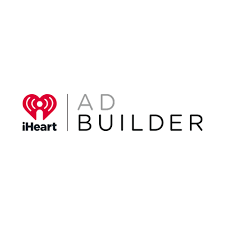
Print display advertising may include brochures, coupons or flyers. These ads work best when they catch the eye of potential customers and encourage them buy from you company.
Typography in print ads
The use of typography has long been a successful design tool for print advertisements. It can help create an illustrative representation that conveys the advertiser's concept better than a picture would, which is the main goal of this medium.
Creating the right font style is also important for a typography print ad to be successful, as a bad one can make it hard to read. The lines should be clear and consistent to emphasize the visual aspect. It should also be easy to read, with good kerning and consistent weight.
Illustrations for print ads
An advertisement must include strong illustrations that capture the reader's attention, motivate them to take action and grab their attention. It can be a photograph, drawing or stock drawing of the item. It may also be a person or animal.

An effective illustration can make the difference between a well-designed print advertisement and one that is poorly designed. A professional illustration will convince and promote the product/service advertised.
Pedigree ads in print
Pedigree's brand uses logos as well as pathos and ethics to create a memorable print advertisement that encourages people to buy their products. This is especially important when it comes to pet food.
The magazine ads in this article highlight the Pedigree brand, in a striking and unique way. These images evoke an emotional response in consumers and encourage them to adopt pets from shelters.
Your business can stand out among the rest, regardless of how big or small it is. A strong logo and creative ads will make your business stand apart from others. This is especially important when your business is sole proprietorship.
Headlines for print ads
The headlines in your ad are what catch the reader's eye and prompt them to read on. They are often the first thing people will see so be sure to grab their attention.

Copy for print ads
The body copy is the text that explains what the ad is about, and how it can benefit your business or organization. This can be a long document so make sure it's easy to understand.
Print ads can also be helped by subheadings. They help readers to scan the ad, and get to the point. Subheadings with information can be used to attract the reader and also provide structure to your copy.
FAQ
What is an advertisement campaign?
Advertising campaign refers to a series of advertisements intended to promote a product. This could also include the entire production of these ads.
The term "ad" comes from the Latin word for "to sell." Marcus Terentius Varro (116–27 BC), the first known user of the term "ad" used it to mean "to make sales."
Advertising campaigns are most often done by large agencies or businesses. They may involve many different media types, including print, television, radio, internet, etc.
Advertising campaigns typically last for several months and have specific goals. One example is that some campaigns seek to create awareness while others are more focused on increasing sales.
Is there a way for me to get free traffic?
Free traffic refers to traffic which comes directly from organic search results. This type of traffic is known as organic traffic or natural traffic. You can get traffic free of charge by using article marketing, social media marketing and blogging.
Article Marketing is an excellent way to generate free traffic. Paid ads have a higher CPC, but the CPC is typically much lower than paid ads. Article marketing is also called content marketing.
Social Media Marketing - Social media sites like Facebook, Twitter, and LinkedIn allow you to promote your business through advertising. These platforms allow you to share updates, photos, and establish relationships with potential customers. Many businesses pay to advertise on social media sites because they want to reach more people at a cheaper price.
Blogging-Blogging is another great way of generating free traffic. If you create quality content that people love to read, visitors will find you. After you attract visitors to your blog, you can make money by selling products or other services.
Email Marketing - Email marketing has been around since the early days of the Internet, but today it still remains one of the best ways to drive traffic to your website. Email marketing is an effective strategy to grow your subscribers and eventually sell things.
What is radio advertising?
It is important that you understand the differences between media. Remember that media can complement each other and are not necessarily competitive.
Radio is best used to complement television advertising. It complements TV by reinforcing key messages and providing additional information.
TV commercials are often too long for radio listeners. Radio ads are usually shorter and less expensive.
What is the best way to learn about television advertising?
Television advertising has the potential to reach large audiences at once. It was also very expensive. But if you use it correctly, it can be extremely powerful.
While there are many types and styles of TV ads, most share some common traits. The first thing to remember when planning any type of TV ad is to ensure it fits into its category. If you're running a product commercial, don't try to run a lifestyle commercial as a product commercial. Your message should remain consistent throughout the campaign.
A second important thing to keep in mind is that prime-time hours is the best time to air ads. This is because TV viewers often relax while in front of the screen. You want them to be able focus on your words and not get distracted by the TV.
Don't assume that just because you have lots of money, you will achieve great results. It may be the reverse. According to University of California research, commercials airing during popular shows are less likely to be seen and sell more products than those which air during unpopular shows. If you spend a lot of money advertising on TV, make sure it's done right.
What is advertising's primary purpose?
Advertising isn’t about selling products.
Advertising is about communicating your ideas and values to people who already care about what you have to say. Advertising is about changing people's minds and attitudes. It's all about building relationships.
It's all about making people feel good about themselves.
But if you don't know what your customers want, you can't sell anything to them.
Prior to you begin any advertising project, make sure you understand your customer's buying habits and needs.
This allows you to design ads that resonate well with them.
Why not advertise your business on social media?
Social Media Marketing is a way to reach customers on social media platforms such as Facebook and Twitter. These networks can be targeted with keywords.
Because it is cheaper to market online than traditional advertising methods, this advertising method is more cost-effective. This allows you to establish strong relationships with current and future clients.
It's easy to start using social media to promote your business. All you need to get started with social media is a smartphone or a computer, and an internet connection.
What do you need to know about print advertising?
Print advertising is a good medium to communicate effectively with consumers. Print advertising is used extensively by companies to promote their products or services. The key objective is to capture the attention of the consumer.
Print ads are usually one page in length and can include text, images and logos. You may also find sound, animation, video and hyperlinks.
Here are the main types and classifications of print advertising:
1. Brochures are large-format printed materials that are designed to draw people into shops. Brochures are filled with eye-catching designs, colorful pictures, and attractive graphics.
2. Catalogues: These are smaller versions or brochures. They are typically sent to customers who have requested information on specific items.
3. Flyers - These small pieces of paper are distributed at events like fairs and concerts. They can be given at retail outlets but must be paid for.
4. Posters – These are larger versions than flyers. They are placed on walls, fences, buildings and other surfaces. They are created by computer software programs in order to grab passersby's eyes.
5. Direct mail - This refers to letters or postcards mailed directly to potential customers. Companies send these out periodically to remind existing customers about their business.
6. Newspaper Ads - These are placed in newspapers and magazines. They are usually quite long and contain both text and images.
Statistics
- In 1919 it was 2.5 percent of gross domestic product (GDP) in the US, and it averaged 2.2 percent of GDP between then and at least 2007, though it may have declined dramatically since the Great Recession. (en.wikipedia.org)
- It's 100% reliant on your website traffic. (quicksprout.com)
- It collects money from the advertisers, keeps 32% for its role in facilitating the process, and the remaining 68% goes to the publisher (you). (quicksprout.com)
- Worldwide spending on advertising in 2015 amounted to an estimated US$529.43 billion. (en.wikipedia.org)
External Links
How To
How do I advertise on Google?
AdWords, Google's advertising platform, allows businesses to buy ads based upon keywords they wish to target. Your account is the first step. Set the budget, select the campaign name, and then add keywords. Then, you place a bid on the keywords. When someone clicks one of the ads you place, they pay only if that click comes from someone who searched with one of your targeted keywords. You can get paid even though people don’t buy any products.
Google has many tools to help you ensure your ads work. These tools include Ads Preferences Manager and Keyword Planner. These will allow you to identify the best options for your company.
A keyword planner allows you to determine the best keywords to use in your campaigns. It will also show you the competition for keywords and help you decide if you should spend money bidding.
Ads Preferences Manager can be used to adjust settings such as the maximum impressions per hour and the minimum price per click.
Analytics allows you monitor and compare the performance to your ads against other companies. You can view reports that show how your ads performed in comparison to other ads.